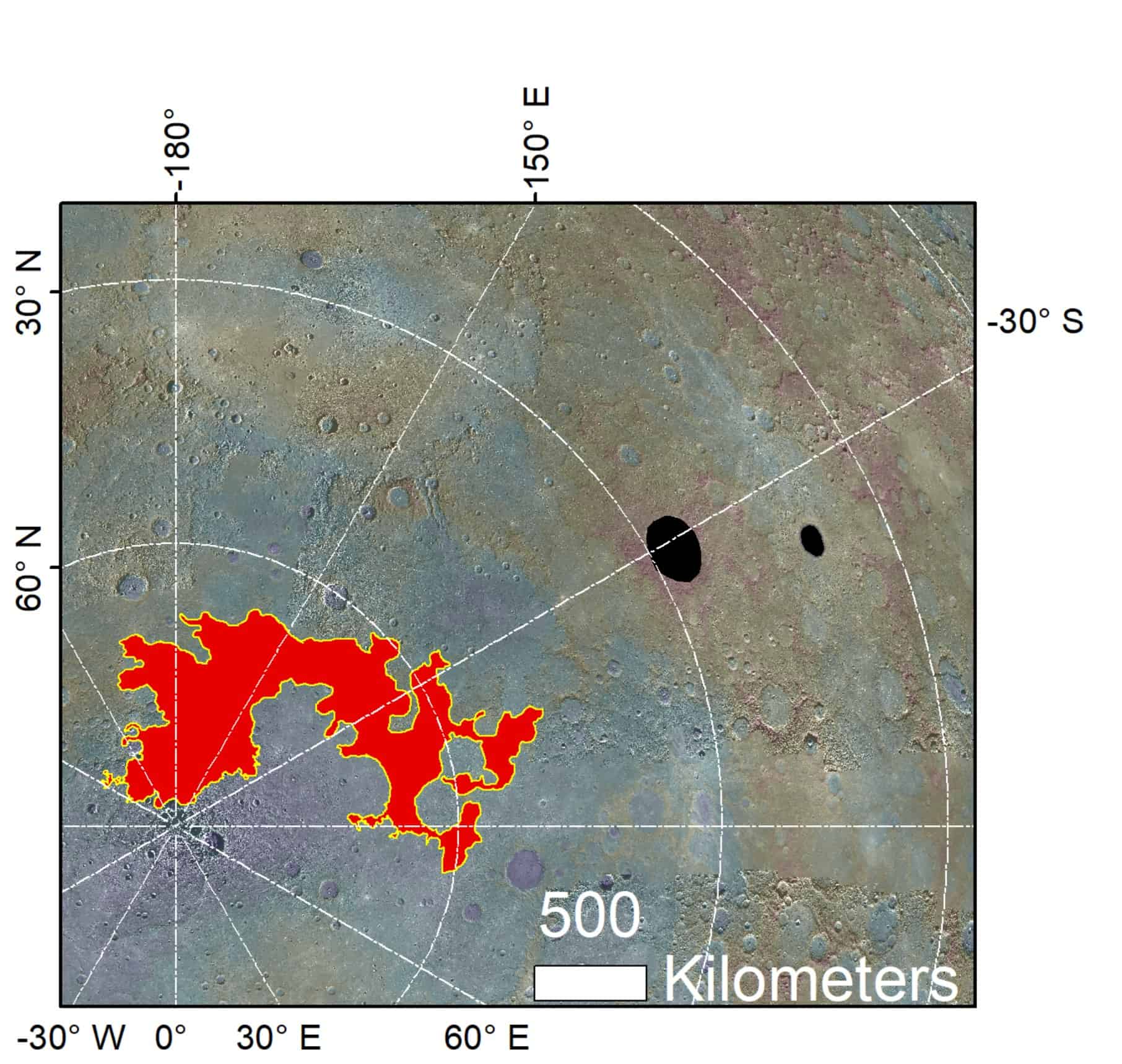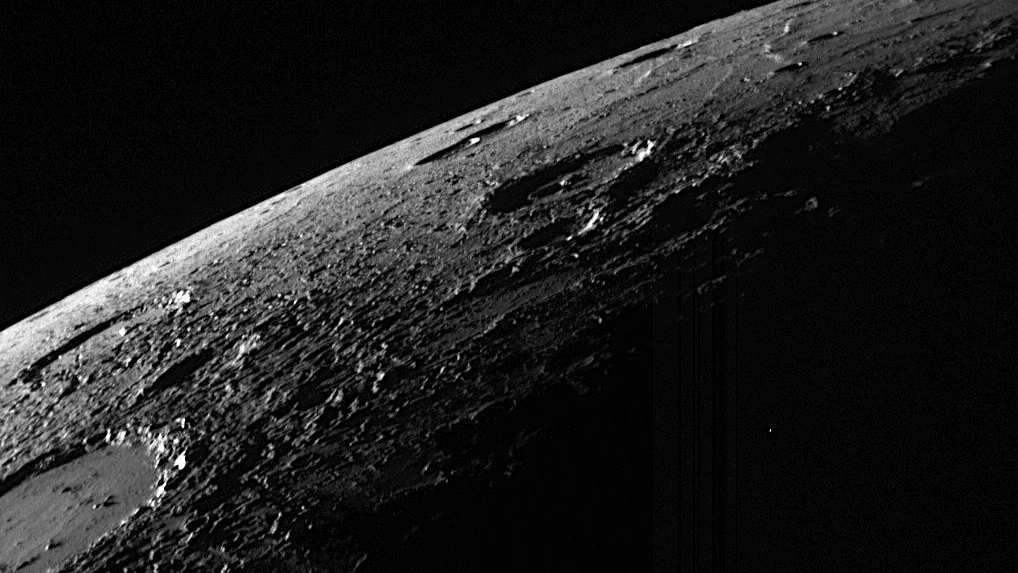Scientists have discovered that salty glaciers may exist on Mercury, the planet closest to the sun and the smallest planet in the solar system. This discovery could show that even the most variable conditions in the inner solar system may sometimes mirror conditions on Earth.
The team’s findings complement recent discoveries that revealed that Pluto contains glaciers of nitrogen. Since Pluto is on the far side of the solar system, the two discoveries indicate that glaciation extends from the hottest regions of the solar system, near the sun, to its frigid outer limits.
Even more exciting, scientists from the Planetary Science Institute (PSI) believe these salty glaciers may create the right conditions for life, similar to some of the extreme environments on Earth where microbial life thrives. “Specific salt compounds on Earth create habitable environments even in some of the extreme environments in which they occur, such as the arid Atacama Desert in Chile,” said lead author of the paper and PSI scientist Alexis Rodriguez. He said in a statement. “This line of thinking leads us to consider the possibility that there are regions beneath Mercury’s surface that may be more hospitable to living than its harsh surface.”
Related: 10 strange facts about Mercury
Sites like those highlighted by the team are of pivotal importance because they define volatile-rich exposures throughout vast multi-planetary landscapes. They also point out that the solar system could contain so-called “depth-dependent goldilocks zones,” which are regions on planets and other bodies where life might be able to survive not on the surface, but at specific depths that have just the right conditions.
“This pioneering discovery of Mercury’s glaciers expands our understanding of the environmental parameters that can support life, adding a vital dimension to our exploration of astrobiology also related to the potential habitability of Mercury-like exoplanets,” Rodriguez said.

Mercury may be richer than we thought
This research challenges the idea that mercury is free of volatiles, elements and chemical compounds that can easily evaporate and were vital to the emergence of life on Earth.
It suggests that volatiles may be buried beneath the young planet’s surface in volatile-rich layers (VRLs). The team has an idea of how VRLs might expose Mercury’s surface, too.
“These glaciers on Mercury, which differ from Earth’s, originate from deeply buried VRLs exposed by asteroid impacts,” said Brian Travis, co-author of the research and a scientist at the Planetary Science Institute (PSI). “Our models strongly confirm that salt flow likely produced these glaciers, and that after emplacement, they retained volatiles for more than a billion years.”
The team believes that Mercury’s glaciers are arranged in a complex configuration with cavities forming small ‘sublimation pits’ – with sublimation being the process by which a solid is instantly converted into a gas bypassing the liquid phase.
“These cavities exhibit depths that represent a significant fraction of the glacier’s total thickness, indicating that they retain a rich volatile composition,” said Deborah Domingue, a PSI scientist and team member. “These cavities are conspicuously absent from the floors and walls of the surrounding pit.”
Domingue added that this observation, by showing that asteroid impacts revealed VRLs, provides a coherent solution to a previously unexplained phenomenon – the apparent relationship between internal cavities and volcanic craters. The team’s research suggests that clusters of cavities within impact craters may arise from VRL exposure zones resulting from space rock impacts; When impacts expose volatiles, they sublimate into gases, leaving cavities behind.

Salty mess on Mercury
Rodriguez and his colleagues examined the Borealis chaos to determine the relationship between Mercury’s glaciers and its chaotic terrain and deduce what might be responsible for the formation of the VRLs.
This region is located in Mercury’s north polar region and is characterized by complex disintegration patterns that appear large enough to erase entire groups of craters, some of which date back about 4 billion years. Beneath this collapsed layer in the Borealis Chaos is an older, cratered surface previously identified by gravity studies.
“The juxtaposition of fragmented upper crust, which now forms a chaotic terrain, on top of this ancient surface exposed by gravity, suggests that the VRLs were placed on top of an already hardened landscape,” Rodriguez said. “These findings challenge prevailing theories about VRL formation that have traditionally focused on mantle differentiation processes, where minerals separate into different layers within the planet’s interior. Instead, the evidence points to large-scale structure, perhaps stemming from the collapse of an ephemeral primordial planet.” The atmosphere in “Early in the history of Mercury.”
The PSI team believes that this atmospheric collapse may have occurred mainly during long nights on Mercury when the planet’s surface was not exposed to the Sun’s intense heat, resulting in low temperatures of about 800 degrees Fahrenheit (430 degrees Celsius) — hot enough to melt lead. – To -290°F (-180°C).
Salt-dominated VRLs on Mercury may also have grown extensively due to underwater sedimentation, an idea that also represents a major departure from previous theories about the early geology of the closest planet to the Sun.
“In this scenario, water released through volcanic degassing may have temporarily created pools or shallow seas of liquid or supercritical water as dense, very salty steam, allowing salt deposits to settle,” said team member and PSI researcher Jeffrey S. Kargel. . “The subsequent rapid loss of water into space and the trapping of water in hydrated minerals in the Earth’s crust left behind a layer dominated by salts and clays, which gradually accumulated to form thick sediments.”
The team’s research is published in Planetary Science Journal.




/cdn.vox-cdn.com/uploads/chorus_asset/file/25550621/voultar_snes2.jpg)

More Stories
Watch a Massive X-Class Solar Explosion From a Sunspot Facing Earth (Video)
New Study Challenges Mantle Oxidation Theory
The theory says that complex life on Earth may be much older than previously thought.